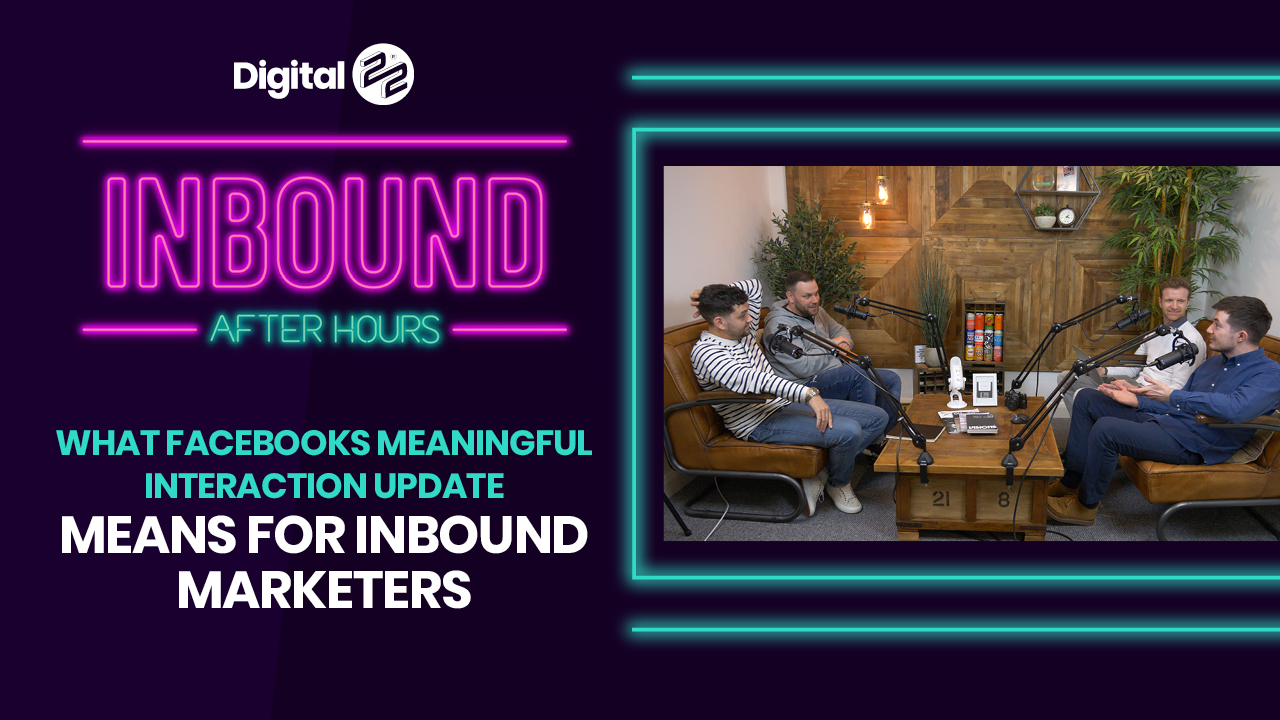What is Growth-Driven Design? Rikki Lear's Leeds HubSpot User Group Talk
Rikki Lear, Founder and Director of Digital 22, delivered a talk at the Leeds HubSpot User Group titled What is Growth Driven Design? Here's the video and a handy read-friendly version in case you don't have your headphones or just want some quick takeaways.

What is Growth Driven Design?
Growth Driven Design (GDD) is the name of a progressive approach to designing, building and optimising websites. Instead of creating a whole website as one long project, a small site of around a dozen key pages are made first and 100 percent of your time and energy is spent on getting those pages perfect. In a month. This is called your 'launchpad.'
Then, each month, you either improve the launchpad pages based on real-life user data or build another batch of the next most important pages.
Improvements include things such as changing CTA colours or locations, altering the nav bar ordering, improving load speed... anything which your user recordings and feedback show is harming UX and UI on your site.
GDD is Pretty Different to Traditional Web Builds
As opposed to creating one design over a period of months, spending another few months building it and inevitably putting all hands to the pump on "go live" day, GDD is more methodical.
Less pages are needed to go live, as you're only building your key launchpad pages instead. You then add to and improve this from month to month. The idea being, essentially, that your website is never finished.
All design decisions are made based on actual website data. You can record (anonymous) user recordings to see where people get stuck when browsing your site and then change layouts accordingly, you can really drill down into page analytics using GA and your CMS, plus you can gather user feedback in the form of pop-up surveys. Each month, all this data informs and prompts design tweaks.
On the other hand, traditional sites go live once they're deemed to be finished and are left to slowly go out of date, only for the whole process to start again in three to five years time when user habits and tastes have changed.
So, is Traditional Web Design Broken?
We think so, yes. It's too much of a high-risk bet as all your eggs are in one basket. You only get one shot at getting it right.
This is problematic as user expectations, habits and browsing methods are changing so fluently and frequently. Only altering your site every few years means you will have only short periods of time where you're offering an optimum, contemporary website experience.
Plus, traditional projects tend to experience delays or it can take a long time to get a website live - because everyone knows it's your only shot - and you need to gamble all of your budget into one big project cost.
But GDD spreads the cost from month to month over a longer period and offers an ongoing improvement schedule.
Some Further Reading (and viewing)
We've been banging on about GDD for a while, ever since Mark and Rikki hooked-up with Luke Summerfield, HubSpot's main GDD-bod. You can see a video Mark made with Luke a good while back, here. And here's some further reading:
- Inbound Influencers video featuring Luke Summerfield.
- What Is Growth Driven Design? An introductory blog post.
- The Growth Driven Design website.
- Luke Summerfield's INBOUND16 talk.
Do GDD with Inbound Marketing and Use the Right Software
Hopefully you're sold on the idea of GDD. The next step is to tie it into your inbound marketing and choose a CMS which lets you do both. You need data and you need to be able to publish optimised content on the regular.
There are a few leading options out there, so we've put together a comparison to help you decide. Just press the button below and you're on your way.
Real Growth. Real Impact.
HubSpot Website Design Impact Award WINNER: Custom-built but easy to manage: a HubSpot CMS case study
How much does a new website cost? 5 ways to make your investment worth it
HubSpot vs. WordPress vs. Drupal
GDD 101: How to Impact Score Your Wishlist Effectively
Why You Should be Using Hotjar for Growth Driven Design
How to Create a Sitemap for Inbound Success
What do the First 6 Months of Growth Driven Design Look Like?
See why enterprises chooseAvidly
Let’s build your HubSpot success story
Compelling final call to action - with accompanying link to Contact page








